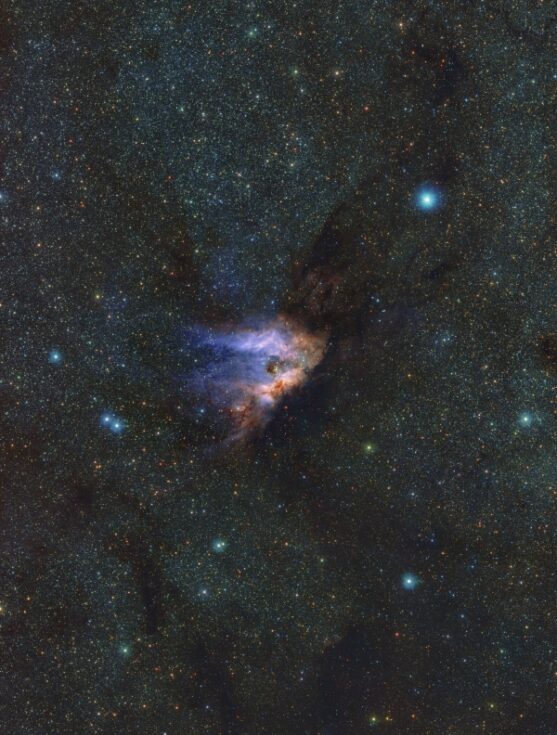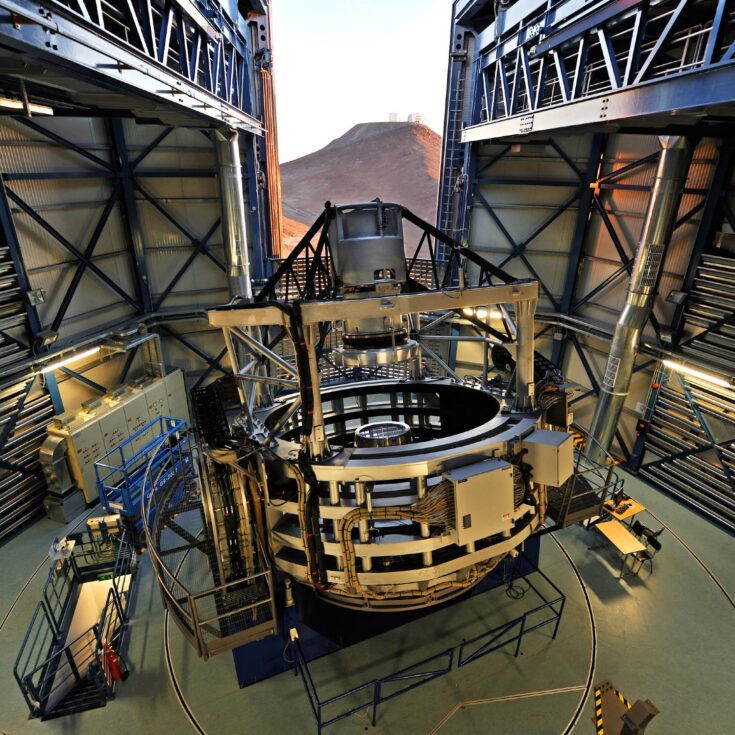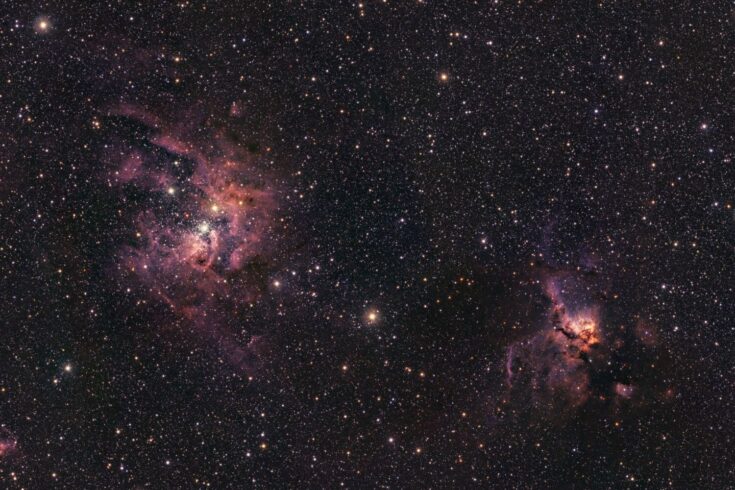Over the course of 13 years, the VISTA Variables in the Vía Láctea (VVV) survey and its extension, the VVV eXtended survey (VVVX), observed the central regions of the Milky Way.
Beginning in 2010, these surveys required 420 nights of observation to:
- capture approximately 200,000 images
- monitor over 1.5 billion celestial objects
- generate 500 terabytes of scientific data
Largest data collection ever
This represents the largest volume of data ever collected for a European Southern Observatory (ESO) observational project.
It provides unprecedented insights into the structure and composition of the Milky Way, the galaxy that contains our own Solar System.
Notable discoveries include:
- globular clusters: the oldest objects in our galaxy
- hypervelocity stars: stars expelled from the galaxy by the central supermassive black hole
- galactic windows: clear views through interstellar dust and gas to the other side of the galaxy
- RR Lyrae variable stars: the oldest known population in the centre of the galaxy
- brown dwarf stars and binary floating planets: unique celestial objects that enhance our understanding of stellar and planetary formation
Dante Minniti, an astrophysicist at Universidad Andrés Bello (UNAB) in Chile, who led the overall project, said:
We made so many discoveries, we have changed the view of our Galaxy forever.

An infrared view of the Messier 17 nebula taken by VISTA. Credit: ESO
UK role on VISTA
The Science and Technology Facilities Council (STFC), through its team at the UK Astronomy Technology Centre (UK ATC), played a key role in the development and delivery of the telescope to ESO.
STFC worked closely with partners across 18 UK universities in the VISTA consortium.
In addition, the Imaging Systems group from STFC’s RAL Space (alongside collaborators from UK ATC and the University of Durham) were responsible for the design and construction of the infrared camera.
At the time it was built, the camera was the largest ever produced.
World’s largest infrared survey telescope
With a 4.1 metre mirror, VISTA is the world’s largest dedicated infrared survey telescope.
By observing at wavelengths longer than those visible to the human eye, VISTA has the capability to study objects that would otherwise remain nearly invisible in visible light.
Such as brown dwarfs (‘failed’ stars that do not have sustained nuclear fusion) or free-floating planets that do not orbit a star.
Delivery of VISTA was also a major part of the UK becoming a member of ESO.
Amazing discoveries
A paper marking the completion of observations of the VVV and VVVX surveys has been recently published in the journal Astronomy & Astrophysics.
The article is led by professors Roberto K. Saito from the Universidade Federal de Santa Catarina in Brazil and Maren Hempel from UNAB in Chile.
It was a collaborative effort involving 146 co-authors from 15 countries across four continents and it details numerous discoveries made possible by this extensive dataset.
300 publications, 30 theses
This data has already produced more than 300 scientific publications and 30 doctoral theses in South America and Europe, covering an incredible range of topics such as:
- galactic structure
- stellar populations
- variable stars
- star clusters and much more
Dr Oscar Gonzalez is Senior Project Scientist at UK ATC and co-author on the new Astronomy & Astrophysics paper.
Dr Gonzalez has been a member of the VVV and VVVX team leading several studies characterising the shape of the central, most obscured parts of the Milky Way.
He said:
The completion of the largest infrared map of the Milky Way is a remarkable achievement for the astronomy community.
The data has provided unprecedented insights into the structure and composition of the Milky Way and will continue to open new avenues for future research that will enhance our understanding of the Universe for years to come.
Invaluable data
The VVV and VVVX surveys were led by Professor Dante Minniti from UNAB and principal investigator at the Center for Astrophysics and Related Technologies and Professor Philip Lucas from the University of Hertfordshire.
Professor Philip Lucas from the University of Hertfordshire’s Centre for Astrophysics Research, said:
By mapping the Milky Way in the infrared, we were able to pierce the obscuring veil of interstellar dust and gas that hides most of our Galaxy in visible light.
Preparing for the future
Meanwhile, ESO’s Paranal Observatory is being prepared for the future.
VISTA will be updated with its new instrument 4MOST and ESO’s Very Large Telescope (VLT) will receive the Multi-Object Optical and Near-infrared Spectrograph (MOONS) instrument.
Together, they will provide spectra of millions of the objects surveyed here, with countless discoveries expected.
An end-to-end vision
Dr Oscar Gonzalez, Senior Project Scientist at UK ATC, continues:
I have a deep affinity for VISTA. The early VVV data was instrumental to my PhD thesis.
I then had the pleasure to be the Paranal Instrument Scientist for VISTA during my time at ESO in Chile.
I believe VISTA to be a prime example of a facility designed and constructed with an end-to-end vision, with telescope, instrument, and software working as an entity – built for each other to perfection – to be then smoothly operated by ESO to deliver these remarkable public surveys to the community.
We are now using all the knowledge gained from VVV and VVVX data in the design of the spectroscopic surveys that we will do with MOONS, a next-generation spectrograph for the Very Large Telescope, which we are currently building at UK ATC.
The VISTA consortium
VISTA was conceived and developed by a consortium of 18 universities in the UK, led by Queen Mary, University of London.

VISTA. Credit: ESO
It became an in-kind contribution to ESO as part of the UK’s accession agreement.
Project management for the telescope design and construction was undertaken by STFC’s UK ATC.
Provisional acceptance of VISTA was formally granted by ESO at a ceremony at ESO’s Headquarters in Garching, Germany, attended by representatives of Queen Mary, University of London and STFC, on 10 December 2009.
The telescope is now operated by ESO.
The VISTA consortium consisted of:
- Queen Mary, University of London
- Queen’s University of Belfast
- University of Birmingham
- University of Cambridge
- Cardiff University
- University of Central Lancashire
- Durham University
- The University of Edinburgh
- University of Hertfordshire
- Keele University
- Leicester University
- Liverpool John Moores University
- University of Nottingham
- University of Oxford
- University of St Andrews
- University of Southampton
- University of Sussex
- University College London

